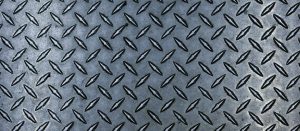
Revolutionizing Automotive Industry
Let’s look at the diverse ways additive manufacturing (AM) and 3D printing technologies have revolutionized the automotive industry.
3D printing has advanced motorsports.
For example, McLaren, a British motor racing team, has partnered with Stratasys to incorporate rapid prototyping and 3D printed production parts into their manufacturing process. McLaren have printed hydraulic line brackets, carbon fiber brake ducts, and a radio harness boot that was used in the 2017 Grand Prix.
3D printing has made custom tools.
BMW has created precision tools for testing parts on the assembly line, reducing cost and resulting in lighter, more ergonomic equipment. This can greatly enhance machining capabilities.
3D printing has diverse material capabilities.
Bugattih has utilized titanium alloy and selective laser melting to create a functional 8-piston caliper, which is the largest caliper on a production vehicle. The company used aerospace-grade titanium alloy that was complex to work with, yet created an unprecedented design with a high tensile strength but of reduced weight.
3D printing has optimized aerodynamics and provided cost efficiency.
Ford Performance used 3D aerodynamic models to optimize the design of the new GT500. 3D printed materials used were significantly lighter. Computational fluid dynamics modeling can help fine-tune heat transfer and aerodynamics. AM not only did it improve the effectiveness of the designs, it dramatically reduced the time it took to develop the GT500 and the costs associated with it.
3D printing is reviving the classes.
Porsche has implemented 3D printing to produce obsolete parts for classic models such as a clutch release lever used in the Porsche 959, using selective laser melting, which fulfilled all precision measurements and withstood a battery of pressure and performance tests.
3D printing has also enabled rapid prototyping, expediting the prototyping process by allowing for rapid, streamlined design and freedom of design concepts. It has also enabled customizable complex designs, allowing for novelty yet maintaining strict specifications and enhanced structural stability.



